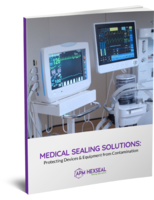Miscellaneous Cleaning Equipment
Hospital Goes No-Touch
University of Southern California Medical Center in East Los Angeles is one of the nation's busiest public hospitals treating more than 800,000 patients annually.
With this many people, "concerns about the spread of infection are multiplied thousands fold," says Bill Walton, the center's Director of Environmental Services.
To help prevent the spread of infection, Walton wanted an effective way to clean the hospital's restrooms. He says traditional methods-rags, sprayers, mops, and buckets-are slow; worse, they can spread germs and bacteria rather than eliminating them.
Looking for an alternative, Walton decided to try the No-Touch Cleaning(TM) System developed by Kaivac, Inc., of Hamilton, Ohio.
"Because it's a no-touch system, our people don't have to hand-scrub toilets, wash down walls, or mop floors," says Walton. "It's much healthier for our staff and our patients [and] far more effective than the old conventional cleaning methods."
About Kaivac, Inc.
Headquartered in Hamilton, Ohio, Kaivac, Inc. delivers complete science-based cleaning systems designed to produce healthy results and outcomes while raising the value of cleaning operations and the professionalism of the worker. The originator of No-Touch Cleaning®, Kaivac offers an integrated portfolio of environmentally friendly cleaning products designed to remove the maximum amount of soil and potentially harmful biopollutants in the most cost-effective manner possible. For more information, visit www.kaivac.com.
About No-Touch Cleaning®
Designed to remove the maximum amount of soil, bacteria, and other biopollution, Kaivac's patented No-Touch Cleaning systems combine an indoor pressure washer, a powerful wet vacuum and chemistry into an integrated system. Empowering workers to hygienically clean without touching contaminated surfaces, these systems not only clean better, but also cut labor, chemical, and equipment costs while raising worker morale and image. In fact, studies show that Kaivac's No-Touch Cleaning systems are 60 times more effective in reducing bacterial contamination on tile and grout surfaces than mops, which are more likely to spread contaminants than remove them.




